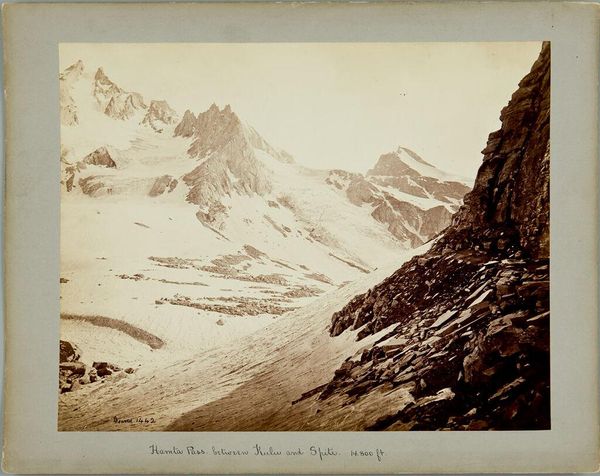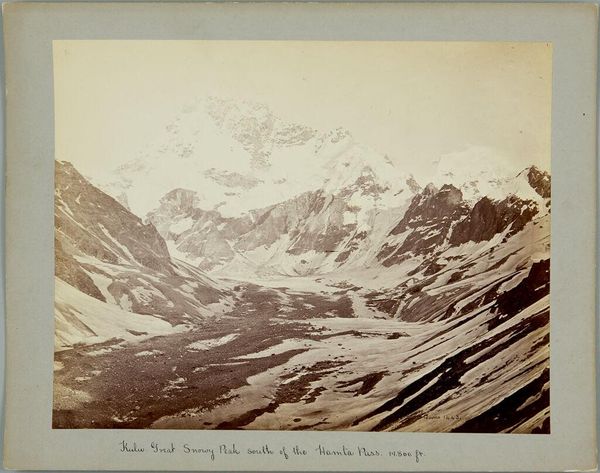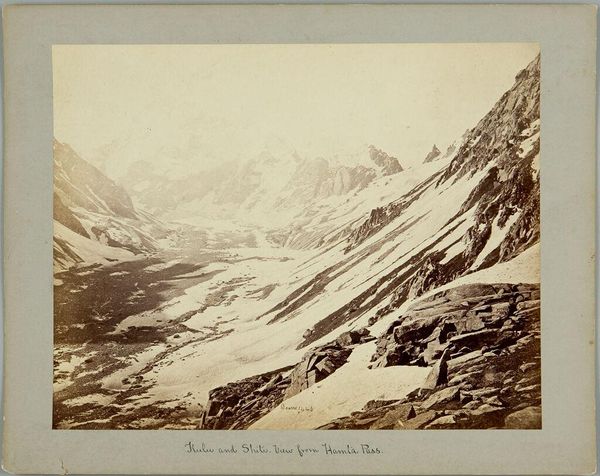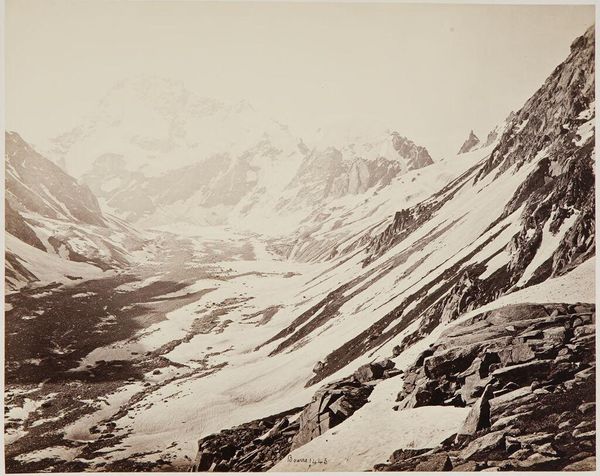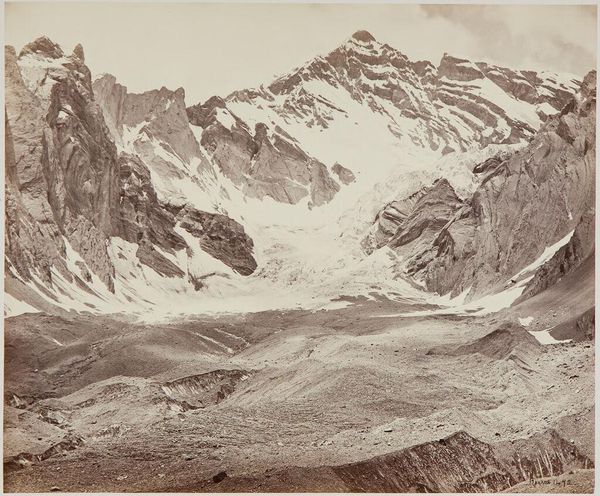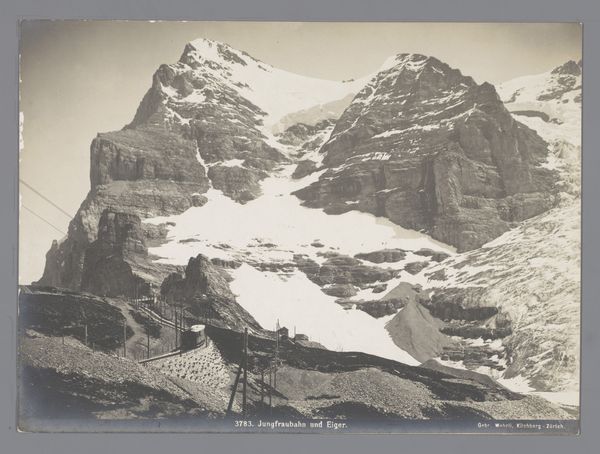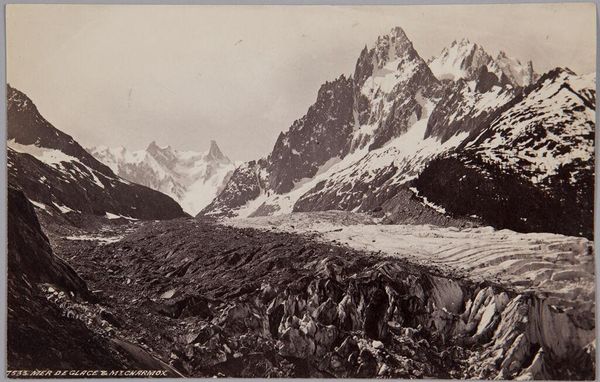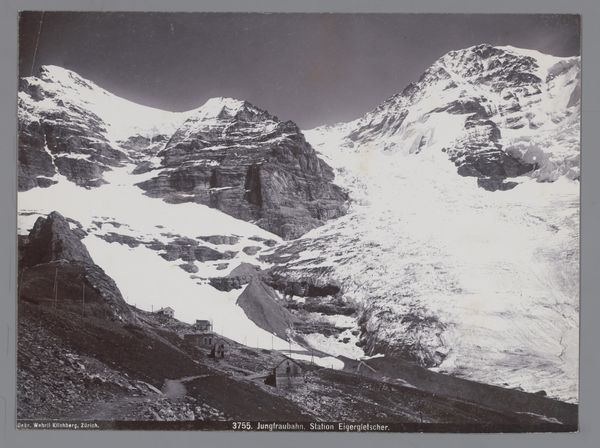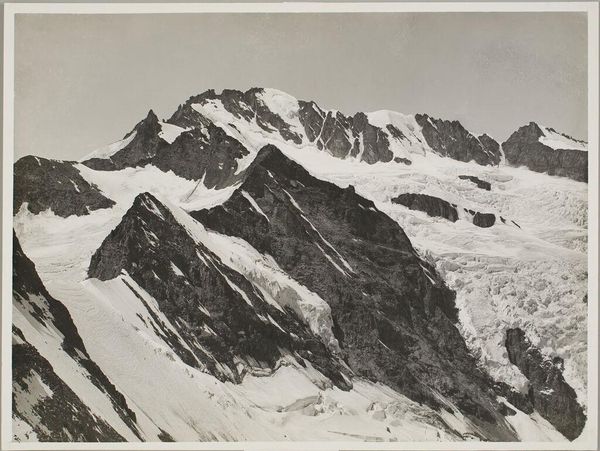
Dimensions: image: 23.7 x 30 cm (9 5/16 x 11 13/16 in.) mount: 28 x 35.6 cm (11 x 14 in.)
Copyright: CC0 1.0
Curator: This striking vintage photograph captures the Kulu and Spiti Range, bounding the Hamta Pass. Samuel Bourne, who lived from 1834 to 1912, created this image, now held at the Harvard Art Museums. Editor: It's quite stark, almost lunar. The rocky foreground gives way to these imposing, snow-covered peaks. What was the production process? Curator: Bourne was a master of the wet collodion process. He would have had to prepare, expose, and develop the glass plate negative while on location. Imagine the logistical challenge in the Himalayas! Consider the weight of the equipment, the darkroom tent… Editor: The labor involved is significant. It recontextualizes our understanding of landscape photography. Beyond the romantic vision, there's a very real materiality and physical effort embedded in this image. How does Bourne's photograph challenge or support colonial narratives of exploration? Curator: Bourne’s work actively constructed notions of the sublime and the exotic in British India. It's crucial to examine how photographs like these influenced perceptions and justified colonial projects through the lens of an almost "untouchable" landscape. Editor: It's a sobering thought, really changing how I appreciate the aesthetic value by revealing its connection to a larger system. Curator: Precisely. It allows for a richer understanding of the photograph's place in history.
Comments
No comments
Be the first to comment and join the conversation on the ultimate creative platform.
